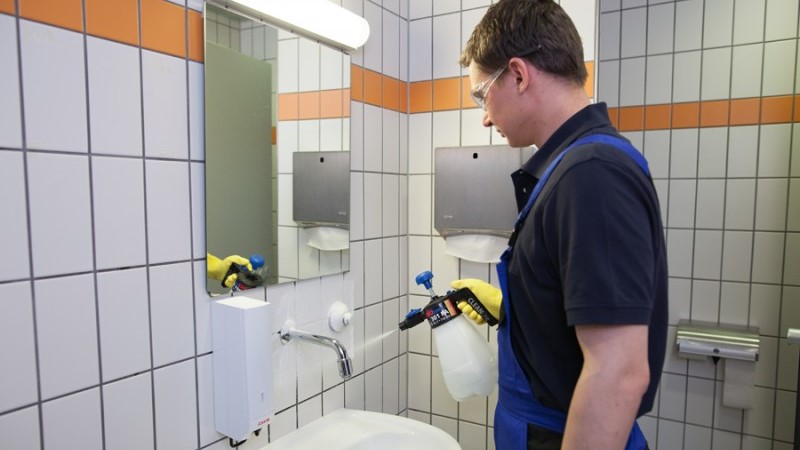
Dispelling Disinfection Myths
Cleaning is not disinfecting, and disinfecting is not cleaning. A cleaner and a disinfectant accomplish different things. Despite their differences, cleaning and disinfection are a package deal. If a surface is dirty, you will need to clean it before disinfecting it to allow disinfectant to reach the pathogens.
A cleaner removes dirt and debris from a surface, while a disinfectant kills the pathogen. The EPA has specific standards that a product must meet to be considered a disinfectant. EPA standards dictate that a product must kill 99.999% of pathogens on a surface, but there is one caveat to the kill claims on disinfectants: dwell time. Dwell time, or contact time is the amount of time disinfectant needs to remain wet on a surface to achieve its kill claims.
The concept of dwell time, or contact time, magnifies the fact that fast disinfection doesn’t equate to thorough disinfection. COVID-19 has spurned the narrative of rapid disinfection—cleaning and disinfecting as fast as possible to stop the spread of the virus to protect workers and customers from the coronavirus. This narrative flies in the face of disinfection best practices.
Many disinfectants need to sit on a surface for a certain amount of time to hit their kill claims, as indicated by the EPA. Quick spraying applications don’t always accomplish sufficient disinfection against harmful pathogens.
Spraying and wiping away a disinfectant too quickly doesn’t allow the disinfectant to do its job properly. Not all disinfectants are made equal. Contact time varies based on what pathogen the disinfectant is targeting. One disinfectant might require only 1 minute of contact time, while another might need 10 minutes of contact time. Paying attention to the label is key to allowing a disinfectant to hit its kill claims.
Dwell Time. Kill Claims. Why are they Important
As we mentioned earlier, disinfectants kill pathogens, but they need to sit or dwell wet on a surface for a specific amount of time.
Failure to leave disinfectants on a surface for their required contact time can mean that pathogens remain on a surface, increasing the risk for the outbreak of infectious viruses and diseases.
Foam as The Solution
A foaming sprayer is an ideal way to achieve chemical dwell times, especially on vertical surfaces. Foam reduces chemical run-off allowing chemical solutions to sit on a surface longer.
Product Feature: 301-FA One-Hand Foaming Sprayer
Solo’s one-hand foaming sprayers come with a patented varioFOAM Adjustment System that allows the operator to change foam moisture levels based on job applications.
- 1.25-liter capacity with 2″ opening allows for easy filling and cleaning
- Quick and efficient pressurization up to 45 psi in less than half the time as competitive models
- Patented VarioFoam Adjustment System allows the operator to dial in more or less moisture to vary the foam thickness based on application
- High-quality, chemical-resistant flat spray nozzle provides even distribution of chemical solution
- Viton® seals throughout for chemical solutions that are 1-7 pH
See the 301-FA here: https://us.solo.global/handheld-and-backpack-sprayers/1067-301-fa-cleanline-one-hand-foaming-sprayer125-liter-viton-ph-1-7.html
